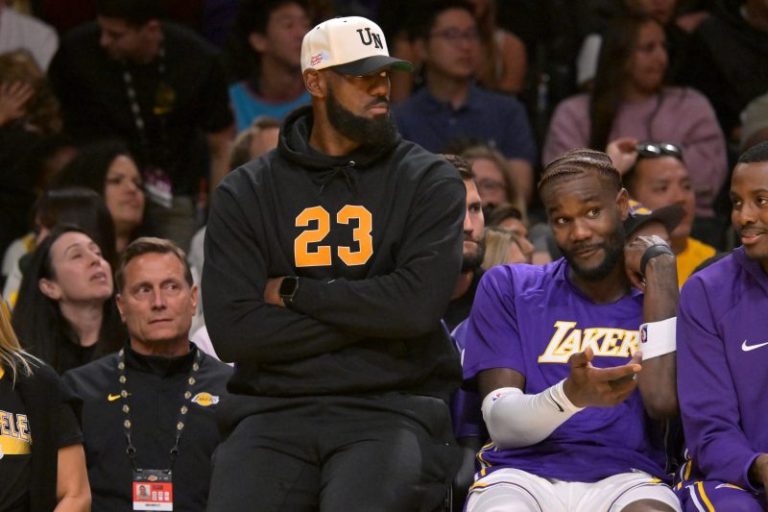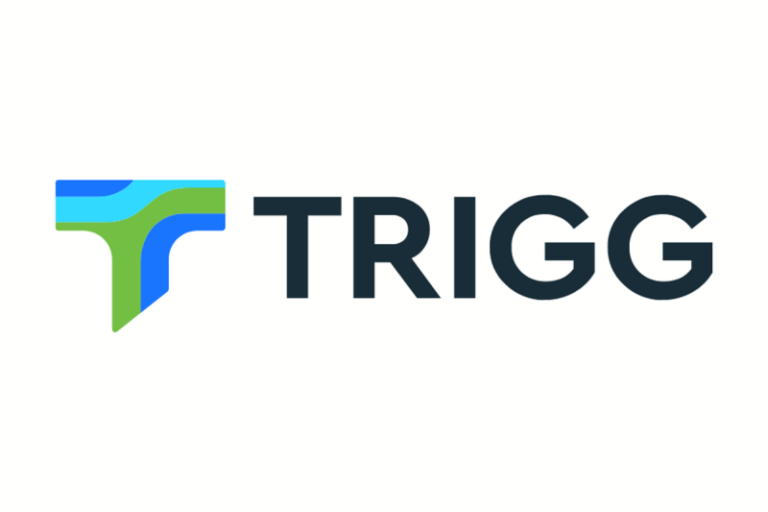The New England Patriots extended their NFL-best winning streak to eight games with a 27-14 win over the New York Jets on ‘Thursday Night Football.’
The Patriots used the formula that has often worked for them throughout the 2025 NFL season to beat the Jets. Their defense put together a strong effort, limiting Justin Fields and Co. to two touchdown drives, while Drake Maye’s efficiency through the air allowed the Patriots offense to outgain the Jets 336-245 during the game.
It wasn’t just Maye (25 of 34 passing, 281 yards and one touchdown) who played well for the Patriots. Running back TreVeyon Henderson also put together a productive game. The second-round rookie handled a career-high 24 touches and scored all three of the Patriots’ touchdowns, two on the ground and one through the air.
Henderson wasn’t particularly efficient between the tackles. He averaged just 3.3 yards per carry and didn’t log a carry longer than 9 yards. However, Henderson showed good power in the red zone, pushing the pile to score his first touchdown of the day, and held up well in the passing game, catching all five of his targets for 31 yards and a score.
The Patriots (9-2) now stand alone atop the AFC standings, having briefly broken the three-way tie they were in with the Denver Broncos and Indianapolis Colts entering Week 11. That stands as a testament to the quick turnaround Mike Vrabel has led within the organization after several years of mediocrity under Bill Belichick and Jerod Mayo.
USA TODAY Sports provided live updates, highlights and more from the ‘Thursday Night Football’ tilt between the Jets and Patriots in Foxborough. All times are Eastern.
Patriots vs. Jets TNF takeaways
- Drake Maye’s accuracy, efficiency and pressure avoidance make the Patriots’ offense hard to stop. The Jets did a solid job coming up with some stops against New England. Still, they could only hold the Patriots down so often. Maye was able to feather excellent touch passes to Stefon Diggs, Mack Hollins and Hunter Henry over the middle of the field frequently while also continuing to show off his elite deep accuracy. As long as he can avoid turnovers and continue to navigate the pocket and thrive against pressure, New England will remain one of the NFL’s most efficient offenses.
- TreVeyon Henderson is capable of handling a full workload. Henderson has played a lion’s share of the Patriots’ snaps at running back in Rhamondre Stevenson’s absence. Against the Jets, Henderson handled a career-high 24 touches, turned them into 93 yards and scored three touchdowns. While his game-breaking speed wasn’t on display as often against the Jets, he showed solid power throughout the night. He has all the tools needed to be a workhorse for the Patriots – as needed.
- Justin Fields remains a top-tier scrambler. Fields didn’t have a lot of success as a passer against the Patriots. He logged just 116 yards through the air. On the ground, Fields was far more impactful. The Jets’ first touchdown drive was created by his ability to find success on the read option, while his willingness to scramble kept several drives alive throughout the evening. If the Jets continue to start Fields, they will need to draw up more designed runs for him. They are where he is at his best.
- Jets WR gambles could pay off. New York acquired two receivers ahead of the 2025 NFL trade deadline: John Metchie III from the Eagles and Adonai Mitchell from the Colts. Both flashed during Thursday’s game. Metchie was the more productive of the two, logging three catches for 45 yards and a touchdown. Meanwhile, Mitchell had just one catch for 10 yards, but he showed excellent separation skills and should only get better as he gets acclimated to his new team. Both should see plenty of action with Garrett Wilson sidelined, and each could prove to be an important piece for the team next season.
Drake Maye stats vs. Jets
- 25-of-34 (73.5% completion rate)
- 281 passing yards
- 1 passing touchdown
- 0 interceptions
- 107.6 passer rating
- 4 rushing attempts
- 2 rushing yards
- 0 rushing touchdowns
TreVeyon Henderson stats vs. Jets
- 19 rushing attempts
- 62 rushing yards
- 2 rushing touchdowns
- 5 receptions
- 31 receiving yards
- 1 receiving touchdown
Stefon Diggs stats vs. Jets
- 9 receptions
- 105 receiving yards
- 0 receiving touchdowns
Justin Fields stats vs. Patriots
- 15-of-26 (57.6% completion rate)
- 116 passing yards
- 1 passing touchdown
- 0 interceptions
- 81.6 passer rating
- 11 rushing attempts
- 67 rushing yards
- 0 rushing touchdowns
Drake Maye NFL MVP odds
Odds from BetMGM on Thursday night after Patriots win over Jets:
- Matthew Stafford (+250)
- Drake Maye (+260)
- Patrick Mahomes (+500)
- Jponathan Taylor (+550)
- Josh Allen (+800)
- Sam Darnold (+1000)
- Jalen Hurts (+2000)
Patriots vs. Jets final score: Patriots 27, Jets 14
TreVeyon Henderson gets first down, setting Patriots up to bleed clock
Henderson handled three carries and turned them into 12 yards. That was enough to run out the clock on the Jets and finish off a 27-14 win for New England.
Jeremy Ruckert drops fourth-down pass as two-minute warning arrives
Justin Fields moved the Jets down the field after the Patriots’ field goal, but a sack set up a fourth down in the red-zone. Fields hit Ruckert beyond the sticks, but the tight end couldn’t hold onto the ball.
The Patriots will get the ball back after the turnover on downs. There’s 1:57 left in regulation, but the Jets have all three of their timeouts remaining. As such, the game isn’t over… yet.
Patriots vs. Jets score: Andy Borregales makes chip-shot 26-yarder to extend Patriots lead
The Patriots weren’t able to get a first down or into the end zone after Michael Clemons knocked down a third-down pass Drake Maye appeared to be aiming at Hunter Henry in the corner of the end zone.
Borregales was called on to attempt a field goal and he made it. The Patriots now lead 27-14 with 6:36 left in regulation.
Patriots 27, Jets 14
Justin Fields can’t handle low snap, fumbles and Patriots recover
On the first play of their drive, Jets center Josh Myers sent a low snap back to Fields. The veteran quarterback couldn’t handle it, and the ball bounced forward. The Patriots jumped on it, setting up a red-zone drive for the AFC East leaders.
Brandon Stephens punches deep shot out of Mack Hollins’ hands, forcing Patriots punt
It momentarily looked like Maye had hit Hollins for a massive, downfield gain on a third-and-15. Stephens managed to catch up to the veteran receiver and punched the ball out of his hands from over his shoulder just after Hollins tried to bring in the pass.
That brought Bryce Baringer in to punt. The Jets will get the ball back at their own 15-yard line, trailing by 10 with 7:43 left in the game.
Jets stall out after Patriots field goal, forced to punt
Justin Fields did a nice job weaving past two defenders for a 2-yard gain to get a first down at the start of the Jets’ drive. The team only moved backward after that, and a third-and-long incompletion forced the Jets to punt.
Austin McNamara’s punt skittered through the end-zone for a touchdown, so the Patriots will get the ball back at their own 20-yard line, leading 24-14 with 9:08 left in regulation.
Patriots vs. Jets score: Andy Borregales makes 44-yard field goal to give Patriots 10-point lead
Borregales missed a 45-yard field goal earlier in the night. His attempt from 44 yards was true, giving the Patriots a 24-14 lead with 12:06 remaining in the fourth quarter.
The Jets were able to force the Patriots to attempt a field goal after sacking Drake Maye for the first time. That put New England into a third-and-long where Maye checked the ball down to TreVeyon Henderson.
Patriots 24, Jets 14
Patriots leading Jets 21-14 entering fourth quarter
The Patriots have outgained the Jets 297-187 through three quarters, but New York has managed to stay in the game with a couple of Justin Fields-led touchdown drives. The Jets haven’t produced much offensively outside of those drives, but they are within an arm’s length of New England entering the final 15 minutes.
Drake Maye has enjoyed a quality game for the Patriots, completing 22 of 27 passes for 244 yards and a touchdown. He has connected well with Stefon Diggs (seven catches, 70 yards) and Mack Hollins (four catches, 64 yards) but running back TreVeyon Henderson has all three of the team’s touchdowns (two rushing, one receiving).
The Patriots have the ball at the Jets’ 41-yard line and are facing a third-and-5 to open the fourth quarter. They will look to keep their drive going and get into scoring range in the hopes of building upon their one-possession lead.
Who is John Metchie III?
Metchie, who just caught the Jets’ first passing touchdown of the day, is a fourth-year receiver who was a second-round pick in the 2022 NFL Draft by the Houston Texans. He missed his rookie season while battling leukemia.
Metchie played the 2023 and 2024 seasons for the Texans before being traded to the Eagles ahead of the 2025 campaign. He was then dealt to the Jets ahead of the NFL trade deadline as part of the package for the Eagles to acquire defensive back Michael Carter II.
Metchie entered Thursday’s game having recorded 45 catches for 433 yards and a touchdown across 37 career games.
Patriots vs. Jets score: Justin Fields finds wide-open John Metchie for TD
The Jets were able to answer the Patriots’ most recent scoring drive with one of their own. Fields led New York on a nine-play, 65-yard drive that culminated in him finding Metchie wide open on a third-and-6 after safety Craig Woodson fell on the play.
Nick Folk made the extra point following the 22-yard touchdown and the Jets are down 21-14 with 3:10 left in the third quarter.
Patriots 21, Jets 14
Patriots vs. Jets score: TreVeyon Henderson logs third TD on 6-yard pass from Drake Maye
Henderson recorded his first multi-TD game in Week 10 against the Buccaneers. He has now one-upped his career-best effort, catching his third score of Thursday’s game on a 6-yard strike from Maye.
Andy Borregales makes the extra point and the Patriots have extended their lead to 21-7 midway through the third quarter.
Patriots 21, Jets 7
When was Justin Fields drafted?
Fields was a first-round pick in the 2021 NFL Draft. The Chicago Bears selected him 11th overall, making him the fourth quarterback selected behind No. 1 overall pick Trevor Lawrence, No. 2 overall pick Zach Wilson and No. 3 overall pick Trey Lance.
Jets punt after penalties derail drive
The Jets started the second half strong, gaining some yards with Breece Hall and Justin Fields on the ground. However, Fields was whistled for intentional grounding following a first-down audible, putting the Jets behind the chains and eventually forcing a fourth-and-28 after a Joe Tippman personal foul penalty.
Austin McNamara’s punt traveled just 33 yards, giving the Patriots the ball back at their own 31-yard line.
Stefon Diggs can’t haul in third-down pass from Drake Maye, Patriots punt
The Patriots have gone three-and-out to start the second half. Maye attempted three passes, but just one was completed, as Diggs managed to briefly catch a third-down pass over the middle of the field before the ground jarred it loose.
Bryce Baringer hit a 50-yard punt that Isaiah Williams returned 19 yards to the Jets’ 32-yard line. New York will get a chance to tie the game, trailing 14-7.
Justin Fields stats at halftime
Fields got off to a strong start, leading the Jets on a touchdown drive during their first possession of the game. However, New York failed to log a first down after their first drive and Fields finished the half completing 4 of 7 passes for 23 yards. His five scrambles for 28 yards and a touchdown all came on the first drive.
Drake Maye stats at halftime
Maye has been efficient against the Jets. He completed his first 11 passes and finished the half having completed 14 of 16 throws for 140 yards. He has a 103.1 passer rating and has also added five rushing yards on two carries.
Andy Borregales misses 45-yard field goal, giving Patriots 14-7 halftime lead
The Patriots weren’t able to capitalize on the Jets’ penalty, as Drake Maye hit Stefon Diggs coming over the middle of the field to put the team in field goal range. However, Borregales’ kick sailed wide right, allowing the Jets to stay within one possession at halftime.
New England has outgained New York 184-93 thus far and will get the ball to start the second half. TreVeyon Henderson has both of the Patriots’ touchdowns, while Justin Fields punched in the Jets’ lone score with his legs.
Brandon Stephens illegal contact penalty wipes out third-down Quincy Williams sack
The Jets appeared to have stopped the Patriots after Williams sacked Drake Maye on a third-and-6. However, Stephens was whistled for illegal contact against Mack Hollins, which kept the Patriots offense on the field with 27 seconds remaining in the first half.
Justin Fields and Adonai Mitchell can’t connect on third down, forcing another punt
Mitchell dropped his last third-down opportunity. This time, Fields couldn’t get the ball to the wide-open receiver, throwing it behind him and forcing the Texans product to make a tough adjustment to try to catch the ball. He couldn’t quite make the play, and the Jets punted again.
Austin McNamara’s punt was fair caught at New England’s 41-yard line. The Patriots will have 1:48 to score before halftime.
Drake Maye throws first incompletion, forcing first Patriots punt
Maye completed his first 11 passes during Thursday’s game. He finally threw an incompletion after he failed to connect on a downfield shot to Stefon Diggs – who appeared to get banged-up during the play – on third-and-9.
Bryce Baringer’s punt traveled 56 yards to the Jets’ 14-yard line. Isaiah Williams returned it 17 yards, but that was nullified by a holding penalty against New York.
Justin Fields and Co. will start their next drive on their own 7-yard line with 3:19 remaining in a fast-moving first half.
Jets go three-and-out after Justin Fields, Adonai Mitchell fail to connect on third down
Mitchell ran a great route against Christian Gonzalez on a third-and-4, beating the star cornerback deep and gaining a step on him. Fields’ throw to Mitchell was a solid one but the second-year wide-out wasn’t able to reel it in despite it hitting his hands.
Austin McNamara was called upon to punt again. He launched a 41-yarder to the New England 15-yard line, where it was fair caught by Marcus Jones.
Who are Drake Maye’s brothers?
Maye has three brothers: Beau, Cole and Luke Maye. Basketball fans may recognize Luke’s name, as he was a four-year player at UNC and averaged 9.9 points and 6.7 rebounds per game over 141 career games with the school.
Patriots vs. Jets score: TreVeyon Henderson scores second 7-yard TD run of first half
Henderson capped off the Patriots’ first drive with a 7-yard touchdown. He did the same thing on the team’s second drive, giving fans a sense of deja vu after he followed a big block from a pulling Mike Onwenu to get in for the score.
Andy Borregales made the extra point again, and the Patriots have their first lead of the day at 14-7.
Patriots 14, Jets 7
Jets go three-and-out on second drive
New York’s second drive wasn’t nearly as successful as its first. Justin Fields misfired on a second-and-9 to put the Jets behind the sticks. He managed to hit Mason Taylor for a 6-yard pass on third down, but that wasn’t enough to pick up the first time.
Austin McNamara came on to punt and uncorked a 45-yarder that was fair caught by Marcus Jones. The Patriots will begin their second drive from their own 17-yard line.
TreVeyon Henderson’s 40 time
Henderson ran the 40-yard dash in 4.43 seconds at the 2025 NFL Combine. That was tied for the seventh-fastest time among running backs to perform in the drill.
Patriots vs. Jets score: TreVeyon Henderson powers in 7-yard TD to answer Jets
The Jets opened the game with a 14-play TD drive. The Patriots followed it up with a 13-play TD drive that saw Henderson make a nice cut to avoid contact in the backfield before bulling his way into the end-zone with the help of his offensive linemen.
Andy Borregales’ extra point is good, and the Patriots and Jets are tied 7-all with 14:17 left in the second quarter.
Patriots 7, Jets 7
Jets lead Patriots 7-0 after fast-moving first quarter
Both the Jets and the Patriots moved the ball well on their opening drives. The Jets had a methodical, 14-play touchdown drive to open the game, while New England is facing a third-and-1 in the red zone on an 11-play drive.
Justin Fields is off to a good start on the ground, logging 28 yards and a touchdown on five carries. He threw only twice but completed both passes for 16 yards.
Meanwhile, Drake Maye has started the game, completing all five of his passes for 23 yards while adding four yards on a scramble. TreVeyon Henderson continues to look good as New England’s backfield leader, racking up 17 yards on four carries to supplement Maye’s production.
Patriots convert fourth-and-2 to keep drive alive
The Patriots were at the edge of field goal range when facing a fourth-and-2 on their opening drive. Mike Vrabel opted to go for it, and Drake Maye found an open Pop Douglas beyond the line to move the sticks.
Jarvis Brownlee Jr. whistled for personal foul for throwing Stefon Diggs to the ground
Brownlee managed to stop Stefon Diggs short of the line to gain on a second-and-10 catch, but the cornerback proceeded to pull back the veteran receiver and throw him to the ground following the whistle.
Brownlee was flagged for unnecessary roughness, giving the Patriots an extra 15 yards following the play.
Jets taking run-heavy approach on offense to open game
The Jets ran the ball 11 times on the opening drive and attempted just three passes. It appeared that Aaron Glenn and Tanner Engstrand were trying to get Justin Fields comfortable and in rhythm by letting him use his legs.
Fields ended up logging five carries for 28 yards and a touchdown on the opening drive of the game. The Patriots have allowed just 79.2 rushing yards per game this season – the fewest in the NFL – but New York racked up 56 on its opening drive.
Patriots vs. Jets score: Justin Fields takes read option for TD to open scoring
The New York Jets took the ball first on ‘Thursday Night Football’ and marched it down the field with ease. The Jets ran a 14-play, 72-yard drive that culminated with a 5-yard Justin Fields touchdown run on a read option.
Nick Folk makes the extra point, and the Jets have a 7-0 lead with 6:56 left in the first quarter.
Jets 7, Patriots 0
Who is the New York Jets starting quarterback?
Justin Fields is set to start at quarterback for the New York Jets. Fields has been the team’s starter throughout his first season in New York, leading the team to a 2-7 record in his first nine games.
Fields has completed 63.5% of his passes for 1,143 yards, six touchdowns and one interception this season while adding 316 yards and three scores on the ground. However, Fields is averaging just 97.3 passing yards per game over his last four starts and grades 26th out of 37 qualified quarterbacks for the 2025 NFL season, per Pro Football Focus.
Where do the New England Patriots play?
The Patriots play at Gillette Stadium in Foxborough, Massachusetts. The stadium is located about 40-45 minutes south of Boston and is also home to the New England Revolution of the MLS.
When was Drake Maye drafted?
Drake Maye was selected with the No. 3 overall pick in the 2024 NFL Draft. He was the third quarterback taken behind Caleb Williams (Chicago Bears) and Jayden Daniels (Washington Commanders).
What time is the Patriots vs. Jets game tonight?
The Patriots and Jets are set to kick off at 8:15 p.m. ET on Thursday night. The Jets travel to Gillette Stadium in Foxborough, Massachusetts for the matchup.
What TV channel is the Patriots vs. Jets game on tonight?
- TV channel (national): N/A
- TV channel (New York market): Fox 5
- TV channel (Boston market): ABC 7
The Patriots vs. Jets matchup will not air on TV, as it will be streamed on Amazon Prime Video. Viewers in the New York market can watch via Fox, while those in the Boston TV market can catch it on ABC 7.
Watch ‘Thursday Night Football’ with a Prime Video subscription
Patriots vs. Jets live stream
- Stream:Amazon Prime Video | Fubo (local market)
Amazon Prime Video will air the Jets-Patriots ‘Thursday Night Football’ matchup. Those in local TV markets can use Fubo to watch the matchup.
Patriots vs. Jets prediction
Drake Maye is entering the MVP discussion with his 19-touchdown, five-touchdown season, eschewing any calls of a ‘sophomore slump.’ The Jets are coming off a pair of wins vs. scuffling teams, but their incremental improvements on defense, special teams and coaching have been apparent all season. Offensively, the Jets are still a wreck, and the injury to Garrett Wilson again limits the offense to just a single playmaker, running back Breece Hall. The Patriots and Mike Vrabel will take the win as they make an easy night of their division rival.
Prediction: Patriots 24, Jets 10
Patriots vs. Jets live betting odds, moneyline, O/U
Jets inactives vs. Patriots
Patriots inactives vs. Jets
New England Patriots uniforms today
The Patriots are debuting their ‘Nor’easter’ uniform on ‘Thursday Night Football’ against the Jets. They are another example of Nike’s ‘Rivalries’ uniforms for the NFL.
Patriots 2025 schedule
Jets 2025 schedule
Is Garrett Wilson playing tonight vs. Patriots?
The Jets ruled Wilson out on Nov. 12 for their Week 11 game against the Patriots on ‘Thursday Night Football.’ The following day, they placed him on IR, meaning he will miss at least four games because of his knee injury.
Is Rhamondre Stevenson playing tonight vs. Jets?
The veteran running back will not play on ‘Thursday Night Football’ against the Jets. The Patriots have not provided a concrete timetable for Stevenson’s return, though he was ruled out for the Patriots’ Week 11 game against the Jets because of a toe injury. It will mark the third consecutive game the 27-year-old running back has missed because of the ailment.
Patriots vs. Jets injury report
4th & Monday: Our NFL newsletter always brings the blitz
Do you like football? Then you’ll enjoy receiving our NFL newsletter in your inbox.
Get the latest news, expert analysis, game insights and the must-see moments from the NFL conveniently delivered to your email inbox. Sign up now!
AFC East standings
- New England Patriots (8-2)
- Buffalo Bills (6-3)
- Miami Dolphins (3-7)
- New York Jets (2-7)
AFC playoff picture entering Week 11
- No. 1 seed: Indianapolis Colts (8-2, AFC South leader)
- No. 2 seed: Denver Broncos (8-2, AFC West leader)
- No. 3 seed: New England Patriots (8-2, AFC East leader)
- No. 4 seed: Pittsburgh Steelers (5-4, AFC North leader)
- No. 5 seed: Los Angeles Chargers (7-3, second in AFC West)
- No. 6 seed: Buffalo Bills (6-3, second in AFC East)
- No. 7 seed: Jacksonville Jaguars (5-4, second in AFC South)
In the hunt: Kansas City Chiefs (5-4), Houston Texans (4-5), Baltimore Ravens (4-5)
AFC No. 1 seed odds
- New England Patriots (+210)
- Indianapolis Colts (+220)
- Buffalo Bills (+500)
- Denver Broncos (+500)
- Kansas City Chiefs (+850)
Sauce Gardner trade details
Colts receive:
Jets receive:
- WR Adonai Mitchell
- Two first-round picks
The Colts sent Mitchell and two first-round picks to the Jets in exchange for Gardner. Presumably, the picks will be Indianapolis’ 2026 and 2027 first-rounders, though that has not yet been confirmed.
This post appeared first on USA TODAY










